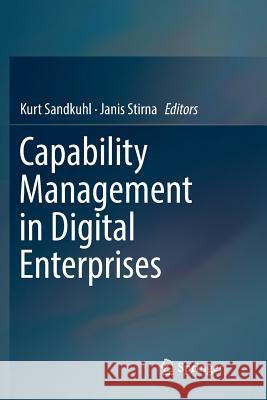Capability Management in Digital Enterprises » książka
topmenu
Capability Management in Digital Enterprises
ISBN-13: 9783030080105 / Angielski / Miękka / 2019 / 396 str.
Kategorie:
Kategorie BISAC:
Wydawca:
Springer
Język:
Angielski
ISBN-13:
9783030080105
Rok wydania:
2019
Wydanie:
Softcover Repri
Ilość stron:
396
Waga:
0.57 kg
Wymiary:
23.39 x 15.6 x 2.13
Oprawa:
Miękka
Wolumenów:
01
Dodatkowe informacje:
Wydanie ilustrowane











